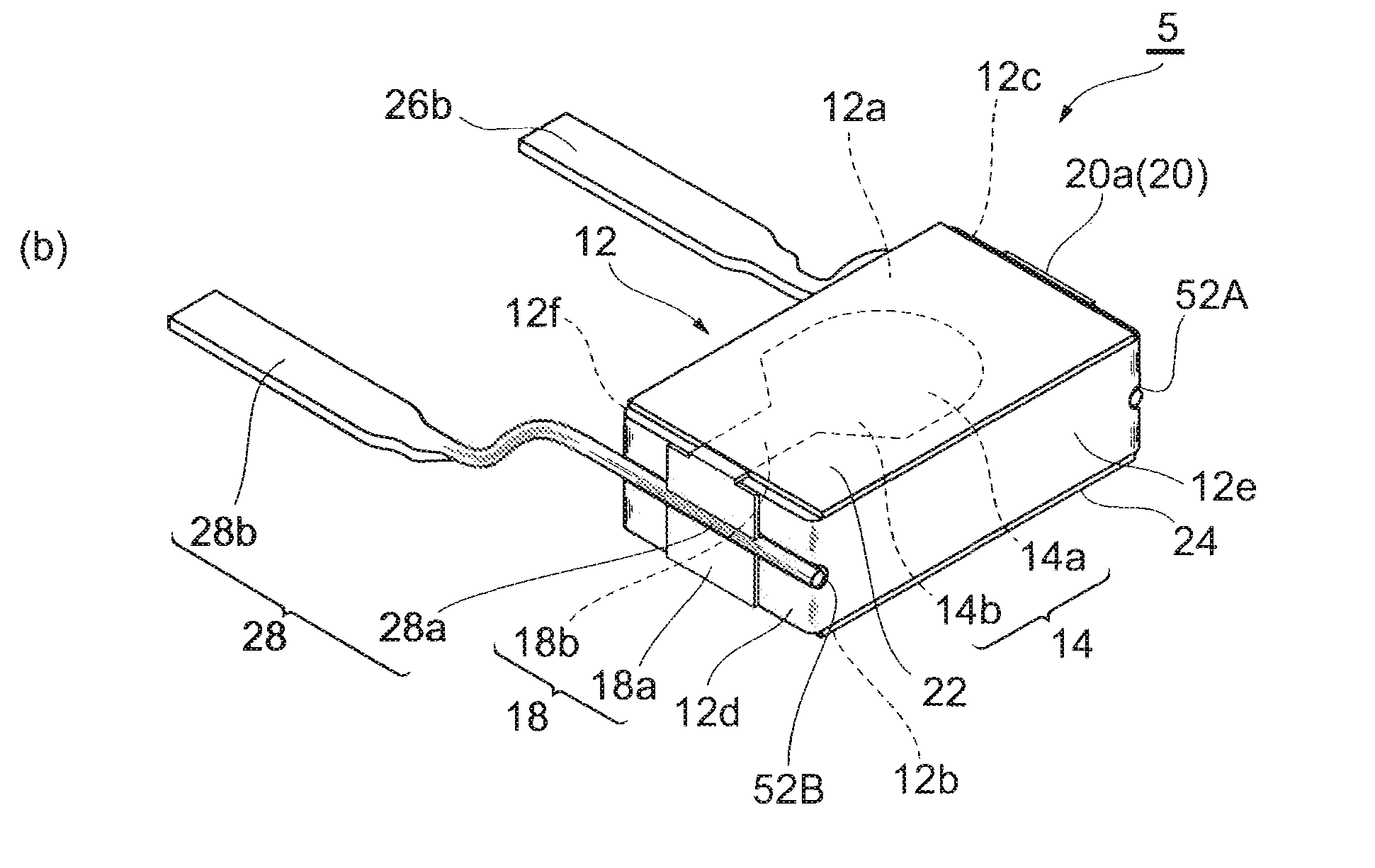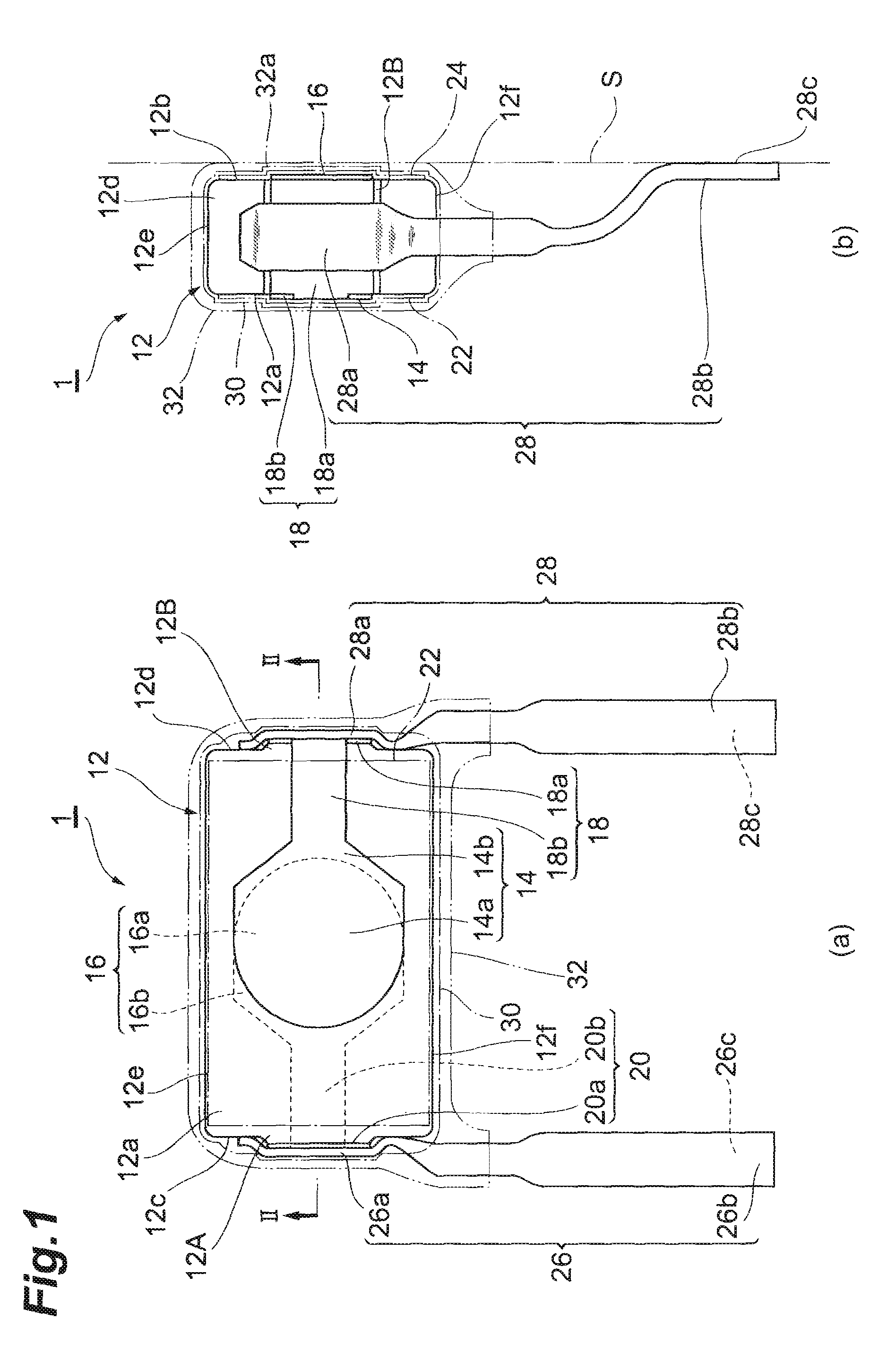Electronic component, mounted structure, and inverter device therewith
a technology of mounted structure and inverter device, which is applied in the direction of fixed capacitor details, final product manufacturing, fixed capacitors, etc., can solve the problems of large effort, time, cost, etc., for mounting capacitors at a desired position on the circuit board, and it is difficult to automatize the mounting process, so as to improve withstanding voltage performance, prevent the occurrence of migration, and ensure the effect of withstanding voltag
- Summary
- Abstract
- Description
- Claims
- Application Information
AI Technical Summary
Benefits of technology
Problems solved by technology
Method used
Image
Examples
first embodiment
[0036]First, a structure of a surface mount type electronic component 1 according to the first embodiment will be described with reference to FIGS. 1 and 2. (a) of FIG. 1 is a perspective view of the surface mount type electronic component of the first embodiment from the principal face side of a dielectric element body and (b) of FIG. 1 a perspective view of the surface mount type electronic component of the first embodiment from the side face side of the dielectric element body. FIG. 2 is a sectional view along line II-II in (a) of FIG. 1. The surface mount type electronic component 1 of the first embodiment is an application of the present invention to a surface mount type capacitor.
[0037]The surface mount type electronic component 1, as shown in FIG. 1, has a dielectric element body (element body with a dielectric property) 12, electrodes 14, 16, lead conductors 18, 20, solder resists 22, 24, a pair of lead wires 26, 28, an undercoat 30, and an armor 32.
[0038]The dielectric elem...
second embodiment
[0076]The surface mount type electronic component 2 according to the second embodiment will be described below with reference to FIG. 6. (a) of FIG. 6 is a perspective view of the surface mount type electronic component of the second embodiment from the principal face side of the dielectric element body and (b) of FIG. 6 a sectional view along line VIb-VIb in (a) of FIG. 6. The surface mount type electronic component 2 of the second embodiment will be described below with focus on differences from the surface mount type electronic component 1 of the first embodiment, without redundant description.
[0077]The surface mount type electronic component 2, as shown in FIG. 6, has a dielectric element body 12, electrodes 14, 16, lead conductors 18, 20, solder resists 22, 24, a pair of lead wires 26, 28, an undercoat 30, and an armor 32.
[0078]The dielectric element body 12 has principal faces 12a, 12b facing each other, side faces 12c, 12d facing each other, and side faces 12e, 12f facing eac...
PUM
 Login to View More
Login to View More Abstract
Description
Claims
Application Information
 Login to View More
Login to View More - R&D
- Intellectual Property
- Life Sciences
- Materials
- Tech Scout
- Unparalleled Data Quality
- Higher Quality Content
- 60% Fewer Hallucinations
Browse by: Latest US Patents, China's latest patents, Technical Efficacy Thesaurus, Application Domain, Technology Topic, Popular Technical Reports.
© 2025 PatSnap. All rights reserved.Legal|Privacy policy|Modern Slavery Act Transparency Statement|Sitemap|About US| Contact US: help@patsnap.com



